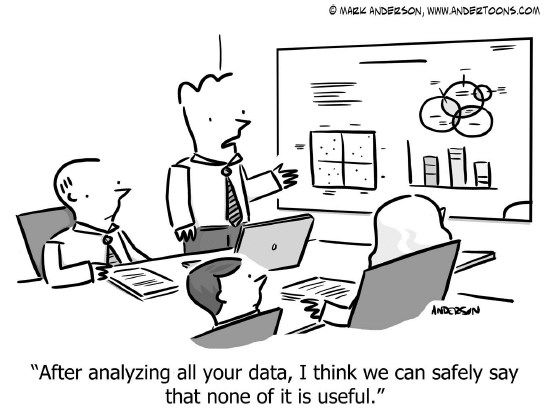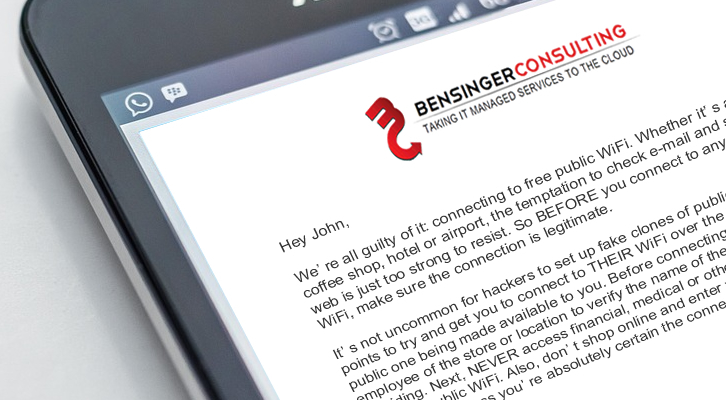
Protecting Your Business From Data Disasters
Data is everything to a small business in this day and age – which means if you lose access or control of your data, you lose everything.
As dramatic as that might sound, the data backs that up. According to several sources, 93% of companies, no matter how big they are, are out of business within one year if they suffer a major data disaster without having first formulated a strategy for combating it.
And since 68% of businesses don’t have any sort of plan for that worst-case scenario, that means losing data would be a death knell for most of the businesses in the country.
Fortunately, your business does not have to be one of them. By taking the following steps, you can ensure that you have a rock-solid disaster recovery plan in place.
Step 1: Know How A Disaster Recovery Plan Is Different From A Business Continuity Plan
The main difference between these two types of plans is that while business continuity plans are proactive, disaster recovery plans are reactive.
As dramatic as that might sound, the data backs that up. According to several sources, 93% of companies, no matter how big they are, are out of business within one year if they suffer a major data disaster without having first formulated a strategy for combating it.
And since 68% of businesses don’t have any sort of plan for that worst-case scenario, that means losing data would be a death knell for most of the businesses in the country.
Fortunately, your business does not have to be one of them. By taking the following steps, you can ensure that you have a rock-solid disaster recovery plan in place.
Step 1: Know How A Disaster Recovery Plan Is Different From A Business Continuity Plan
The main difference between these two types of plans is that while business continuity plans are proactive, disaster recovery plans are reactive.
More specifically, a business continuity plan is a strategy by which a business ensures that, no matter what disaster befalls it, it can continue to operate and provide products and services to its customers.
A disaster recovery plan, on the flip side, is a strategy by which businesses can back up and recover critical data should it get lost or held for ransom.
So, now that we have a clear, concise understanding of what constitutes a disaster recovery plan, we can dive into the steps necessary to create one.
Step 2: Gather Information And Support
In order to get the ball rolling on your disaster recovery plan, start with executive buy-in.
This means that everyone, from the CEO to the entry-level employees, needs to be brought
A disaster recovery plan, on the flip side, is a strategy by which businesses can back up and recover critical data should it get lost or held for ransom.
So, now that we have a clear, concise understanding of what constitutes a disaster recovery plan, we can dive into the steps necessary to create one.
Step 2: Gather Information And Support
In order to get the ball rolling on your disaster recovery plan, start with executive buy-in.
This means that everyone, from the CEO to the entry-level employees, needs to be brought
Continued on page 2
Continued from page 1
in on executing the plan in case your company suffers a data disaster. When everyone is aware of the possibility of a data disaster, it allows for cross-functional collaboration in the creation process – a necessary step if you want to prevent breaches in all parts of your systems.
You need to account for all elements in your tech systems when you’re putting together your disaster recovery plan, including your systems, applications and data. Be sure to account for any issues involving the physical security of your servers as well as physical access to your systems.
You’ll need a plan in case those are compromised. In the end, you’ll need to figure out which processes are absolutely necessary to keep up and running during a worst-case scenario when your capability is limited.
Step 3: Actually Create Your Strategy
When everyone is on board with the disaster recovery plan and they understand their systems' vulnerabilities, as well as which systems need to stay up and running even in a worst-case scenario, it’s time to actually put together the game plan. In order to do that, you’ll need to have a good grip on your budget, resources, tools and partners.
If you’re a small business, you might want to consider your budget and the timeline for the recovery process.
in on executing the plan in case your company suffers a data disaster. When everyone is aware of the possibility of a data disaster, it allows for cross-functional collaboration in the creation process – a necessary step if you want to prevent breaches in all parts of your systems.
You need to account for all elements in your tech systems when you’re putting together your disaster recovery plan, including your systems, applications and data. Be sure to account for any issues involving the physical security of your servers as well as physical access to your systems.
You’ll need a plan in case those are compromised. In the end, you’ll need to figure out which processes are absolutely necessary to keep up and running during a worst-case scenario when your capability is limited.
Step 3: Actually Create Your Strategy
When everyone is on board with the disaster recovery plan and they understand their systems' vulnerabilities, as well as which systems need to stay up and running even in a worst-case scenario, it’s time to actually put together the game plan. In order to do that, you’ll need to have a good grip on your budget, resources, tools and partners.
If you’re a small business, you might want to consider your budget and the timeline for the recovery process.
These are good starting points for putting together your plan, and doing so will also give you an idea of what you can tell your customers to expect while you get your business back up to full operating capacity.
Step 4: Test The Plan
Even if you complete the first two steps, you’ll never know that you’re prepared until you actually test out your disaster recovery plan. Running through all the steps with your employees helps them familiarize themselves with the steps they’ll need to take in the event of a real emergency, and it will help you detect any areas of your plan that need improvement. By the time an actual data disaster befalls your business, your systems and employees will easily know how to spring into action.
So, to review, these are the quick actions that you and your employees will need to take in order to make a successful, robust disaster recovery plan:
• Get executive buy-in for the plan.
• Research and analyze the different systems in your business to understand how they could be impacted.
• Prioritize systems that are absolutely necessary to the functioning of your business.
• Test your disaster recovery plan to evaluate its effectiveness.
Complete these steps, and you can ensure that your business will survive any data disaster that comes your way.
"93% of companies, no matter how big they are, are out of business within one year if they suffer a major data disaster without having first formulated a strategy for combating it"
"I DIDN’T KNOW"
Unfortunately, That Excuse Doesn’t Replenish Your Bank Account, Resolve A Data Breach Or Erase Any Fines And Lawsuits. It’s coming...
• That day a hacker steals critical data, rendering your office useless...
• That day when your bank account or credit card is compromised...
• Or that day when your customers’ private lives are uprooted...
Now, we have the perfect way to help reduce your risk and keep you safe! Simply sign up to receive our FREE “Cyber Security Tip of the Week.” We’ll send these byte-sized quick-read tips to your e-mail in-box. Every tip is packed with a unique and up-to-date real-world solutions to keep your safe online.
Cybercriminals and hackers are constantly inventing NEW ways to infiltrate your company, steal your assets and disrupt your life. The ONLY way to STOP THEM is by CONSTANTLY EDUCATING yourself on how to PROTECT what’s yours!
Unfortunately, That Excuse Doesn’t Replenish Your Bank Account, Resolve A Data Breach Or Erase Any Fines And Lawsuits. It’s coming...
• That day a hacker steals critical data, rendering your office useless...
• That day when your bank account or credit card is compromised...
• Or that day when your customers’ private lives are uprooted...
Now, we have the perfect way to help reduce your risk and keep you safe! Simply sign up to receive our FREE “Cyber Security Tip of the Week.” We’ll send these byte-sized quick-read tips to your e-mail in-box. Every tip is packed with a unique and up-to-date real-world solutions to keep your safe online.
Cybercriminals and hackers are constantly inventing NEW ways to infiltrate your company, steal your assets and disrupt your life. The ONLY way to STOP THEM is by CONSTANTLY EDUCATING yourself on how to PROTECT what’s yours!
Safe, Reliable And Unique … Like A ’63 Impala
For years now, I’ve told any business owner who will listen to "get different." If you’ve read my book of the same name, you’ll know that it’s not necessarily the better businesses that attract the most customers – it’s the most different businesses. In an overly saturated market, the name of the game is standing out in the crowd.
Rather than just reshare the step-by-step guide that’s in my book, I thought I would give a rather unique example of “get different” in action – and it’s probably not anything you would expect.
Behold: Morris County’s sheriff, James Gannon, and his ’63 Chevy Impala. He might not be a businessman, but if he wants to garner votes for the next sheriff’s election, he’ll have to market himself nonetheless – and a classic police car is the perfect way to market what kind of candidate he is.
If you’re having trouble picturing what a ‘63 Impala looks like, think about any classic police movie from around that era. The officer probably drove something similar, with the sleek body topped with a bulbous police light. If you saw that car driving up the street, what would you think about it? My guess is classy, old-school, bold, reliable, safe and just plain interesting. To his community, James Gannon is all of those things, if only by association with his Impala.
However, I should mention that Sheriff Gannon’s car isn’t some sort of misdirect; it’s an accurate representation of who he is. Regardless of where you might fall on the political spectrum, you can’t argue with his experience: 40 years in law enforcement and the security industry, working not only for his local police department, but also for the FBI, the prosecutor’s office and finally as the sheriff in Morris County. Sheriff Gannon’s Impala accurately represents the fact that he is classy, reliable, bold, relatable and,
Rather than just reshare the step-by-step guide that’s in my book, I thought I would give a rather unique example of “get different” in action – and it’s probably not anything you would expect.
Behold: Morris County’s sheriff, James Gannon, and his ’63 Chevy Impala. He might not be a businessman, but if he wants to garner votes for the next sheriff’s election, he’ll have to market himself nonetheless – and a classic police car is the perfect way to market what kind of candidate he is.
If you’re having trouble picturing what a ‘63 Impala looks like, think about any classic police movie from around that era. The officer probably drove something similar, with the sleek body topped with a bulbous police light. If you saw that car driving up the street, what would you think about it? My guess is classy, old-school, bold, reliable, safe and just plain interesting. To his community, James Gannon is all of those things, if only by association with his Impala.
However, I should mention that Sheriff Gannon’s car isn’t some sort of misdirect; it’s an accurate representation of who he is. Regardless of where you might fall on the political spectrum, you can’t argue with his experience: 40 years in law enforcement and the security industry, working not only for his local police department, but also for the FBI, the prosecutor’s office and finally as the sheriff in Morris County. Sheriff Gannon’s Impala accurately represents the fact that he is classy, reliable, bold, relatable and,

perhaps most importantly, safe. In a word, he’s different from the other candidates. So, if you’re looking to get different like Sheriff Gannon, let me finish up this article by giving you a few tips.
Find Your “Est” Buying a car and outfitting it with your logo might not be the best move for marketing your business, but it should make you ask yourself these questions: What is your “est”? Are you the smartest? The fastest? The boldest? The most analytical, reliable or progressive? Find your "est" – what makes you unique – and run with it.
Stay Visible Keep putting your business out there, even as you start to win business. Staying in the public eye is how you communicate to your market that you’re confident in what you’re offering, and that you’re in it for the long haul.
You want people to know that you’re like Sheriff Gannon and his Impala – reliable and trustworthy.
The world is changing in so many ways right now. With your very own innovative marketing strategies, let everyone know that, through it all, your business vows to remain reliable and authentic.

Mike Michalowicz is a very successful author, entrepreneur and lecturer. He has written several successful books, including his latest, Get Different. He is currently the host of the "Business Rescue" segment on MSNBC’s Your Business, and he previously worked as a small-business columnist for The Wall Street Journal.
GET WEEKLY CYBERSECURITY TIPS IN YOUR EMAIL!
VISIT BENSINGERCONSULTING.COM/TIPS/
3 Digital Disruptions That Affect WFH Employees And How To Avoid Them
As more employees work from home, the risk of cyber-attacks grows. In 2020, between the months of March and July, nearly half of all businesses dealt with some sort of digital disruption. Some of the most common digital disruptions were:
Worker Productivity Losses
When hackers infiltrate company computers, they might steal employee identities. This won’t hurt your business directly, but it will indirectly, as workers have less time for work while they grapple with their identity being stolen.

Internet Of Things Infiltrations
Now that so many “smart” devices can be hooked up to a central server, there are more avenues than ever for hackers to gain access to sensitive company data.
Ransomware Attacks
Businesses of all sizes are falling victim to ransomware attacks, but it’s the small and mid-size ones on a tight budget that really suffer from the fallout.
As more employees work from home, the risk of cyber-attacks grows. In 2020, between the months of March and July, nearly half of all businesses dealt with some sort of digital disruption. Some of the most common digital disruptions were:
Worker Productivity Losses
When hackers infiltrate company computers, they might steal employee identities. This won’t hurt your business directly, but it will indirectly, as workers have less time for work while they grapple with their identity being stolen.

Internet Of Things Infiltrations
Now that so many “smart” devices can be hooked up to a central server, there are more avenues than ever for hackers to gain access to sensitive company data.
Ransomware Attacks
Businesses of all sizes are falling victim to ransomware attacks, but it’s the small and mid-size ones on a tight budget that really suffer from the fallout.
To stop these kinds of attacks, educate your workforce on best practices for avoiding hackers and make sure their systems are up-to-date with good cybersecurity software. Nothing is bulletproof, but you can do a lot to protect your company.
5 Tips For Millennial Entrepreneurs From A Millennial Entrepreneur
Millennial entrepreneurs are more diverse than entrepreneurs of any other generation, with a greater portion of them being women and people of color than ever before.
But what does it take for a millennial to succeed in this brave new world of business?
1. Remember that although older business owners may have valuable insights, they might not understand how entrepreneurship works in the digital age.
2. Know how to do every job in your business; after all, you’ll have to do them all when you start out!
3. Find a mentor, someone who is where you want to be one day, and learn from their successes and failures.
4. Don’t take advice from people who haven’t been where you are – even if the advice is well intentioned and from people you care about.
5. Do not let people judge you for your age. Being in the know about the latest tech – because of your age – is a tremendous advantage in today’s marketplace.
5 Tips For Millennial Entrepreneurs From A Millennial Entrepreneur
Millennial entrepreneurs are more diverse than entrepreneurs of any other generation, with a greater portion of them being women and people of color than ever before.
But what does it take for a millennial to succeed in this brave new world of business?
1. Remember that although older business owners may have valuable insights, they might not understand how entrepreneurship works in the digital age.
2. Know how to do every job in your business; after all, you’ll have to do them all when you start out!
3. Find a mentor, someone who is where you want to be one day, and learn from their successes and failures.
4. Don’t take advice from people who haven’t been where you are – even if the advice is well intentioned and from people you care about.
5. Do not let people judge you for your age. Being in the know about the latest tech – because of your age – is a tremendous advantage in today’s marketplace.

 Arizona's Leading Cybersecurity Expert ®
Arizona's Leading Cybersecurity Expert ®






